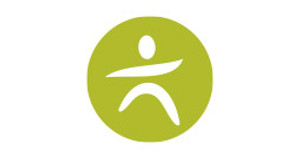Type Casting: Improving Your Typing
Posted by Human Solution on Nov 24th 2010
Ergonomic keyboards and keyboard trays help users to type and mouse with less pain and less risk of injury. One way they do so is by making users adopt proper positions via their shapes. Keyboard trays position the keyboard and mouse within the neutral reach zone and offer negative tilt (tilting the keyboard away from the user) for proper wrist position. Tented keyboards keep users from pronating their forearms. Thus, they do some of the work for you to use proper typing technique. To get full benefit of these devices, however, it is important for users to understand their goals and adapt their own tactics to maximize the effectiveness of these tools.
The first way you can do this is by holding your wrists above they palm rest of your keyboard or keyboard tray. Mashing your wrists down causes pressure on your carpal tunnel tendons and can cause pain over time. It is best to hold your hands so they are either not touching the palm rest or very lightly contacting it. This should be achievable if your keyboard is at the right height and can be negatively tilted.
Speaking of negative tilt, it helps users to keep their wrists straight or flexed slightly downward (making the Thriller dance an ergonomically sound activity). Flexing them upward, or pronating, stresses joints and tendons.
Use as little force as possible when typing. A low force keyboard helps with this, but it is also a function of typing style. Use as little pressure as possible to avoid joint an tendon pain in the fingers, hand, wrist and forearm. This may also help socially if you’re known in the office as “that loud-typing guy in cubicle 7”.
Using these techniques, especially aided by the right ergonomic equipment will go a long way toward preventing or reducing repetitive stress pain.




